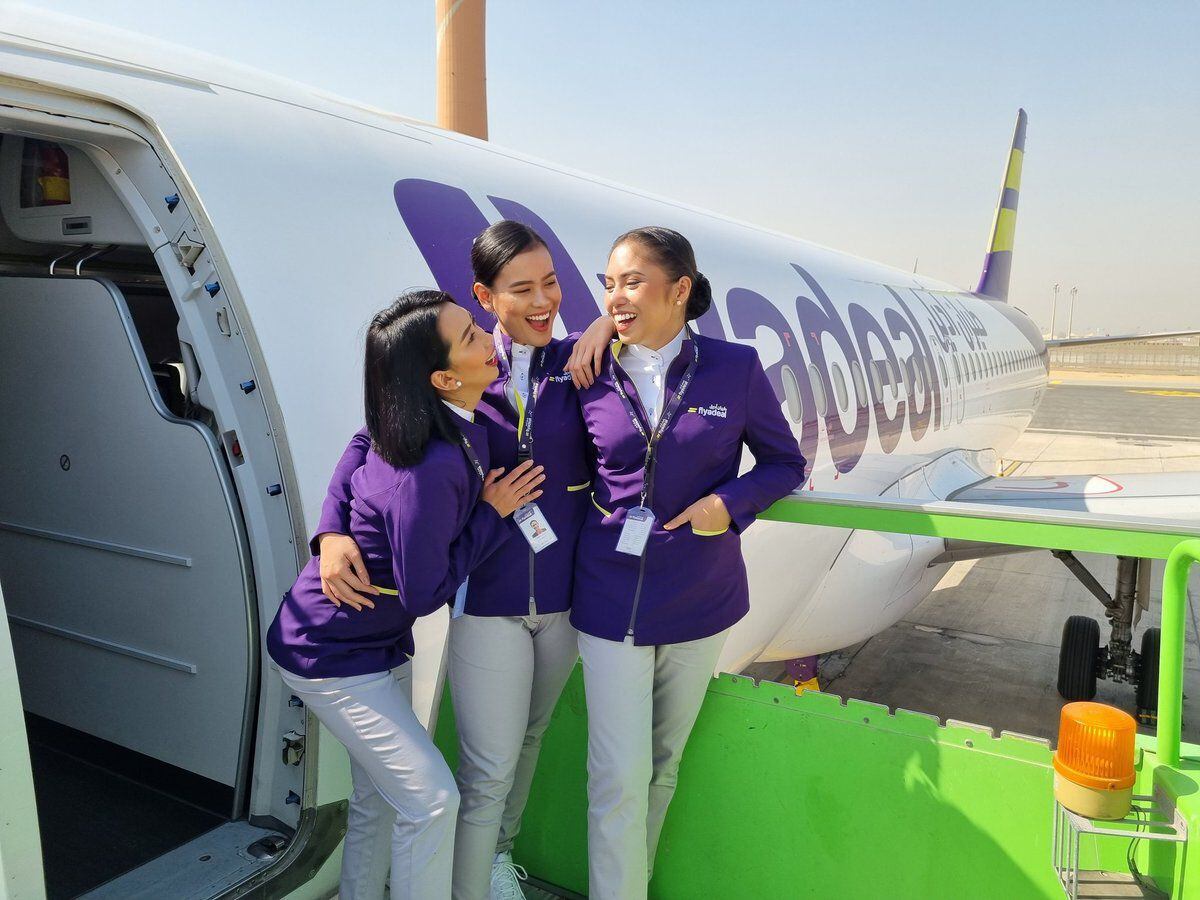
FLYADEAL CONSIDERS AIRBUS A330 NEO AND BOEING 787 FOR ITS FIRST WIDE-BODY JET ORDER
Saudi Arabia's low-cost airline Flyadeal is nearing a decision on its first wide-body jet order as it considers the Airbus A330 Neo and Boeing 787 Dreamliner models to build its long-haul route network, according to its chief executive.
Flyadeal, which is currently an all-Airbus fleet operator, expects to choose the aircraft model by October and is considering buying up to 15 wide-bodies to serve destinations such as Paris, Steven Greenway told The National on the sidelines of the Farnborough International Airshow in the UK.
“The A330 fits the bill and indeed the A330 has been adopted by other [low-cost carriers] anyway, so that reinforces that it's the aircraft on the Airbus side that you would want,” Mr Greenway said.
“We are very, very close to finishing our assessment [of both aircraft types] and we're just getting the final points from the suppliers in terms of the engines and the [original equipment manufacturers]. We've already got the best and final pricing from them.”
In terms of the Boeing 787, Flyadeal may leverage some of the options from an existing order by its sister airline Saudia and potentially place its own order as well, Mr Greenway said.
Flyadeal is also considering another possibility: taking some of the older A330s and Boeing 777s from Saudia and reconfiguring them to its specifications, he said.
Both airlines are owned by the Saudia Group.
However, Flyadeal is leaning towards ordering new aircraft due to the lower maintenance costs, better fuel burn and lower overhead costs, as it continues to keep unit costs down to be competitive, Mr Greenway said.
In May, Saudia Group placed a confirmed order for 105 Airbus A320-family narrow-body jets. Of these, Flyadeal will get 12 A320 Neos and 39 of the larger A321 Neo aircraft.
The Farnborough International Airshow 2024 – in pictures
Long-haul growth plans
The move to buy wide-body aircraft comes as Flyadeal seeks to expand into long-haul destinations in Europe and South East Asia, the chief executive said.
“The premise for the wide-bodies is quite simple: you have a number of customer segments that are quite substantial in the kingdom. The religious traffic, the workers traffic and also leisure traffic that are all high-volume and low-yield from the subcontinent, South East Asia in particular, and select parts in Europe as well,” Mr Greenway said.
“The market is there and the market is growing.”
The twin-aisle jets would be used to serve destinations in South East Asia and the subcontinent such as Pakistan, Bangladesh and the east coast of India that would otherwise be out of range from its bases in Jeddah and Riyadh using single-aisle aircraft.
The aircraft would also fly passengers from European countries with large Muslim populations for Hajj and Umrah travel.
“Paris would be a target,” Mr Greenway said.
Currently, Flyadeal wet leases wide-bodied aircraft from other operators during the busy Hajj season.
Under a wet lease arrangement the lessor maintains operational control of flights while providing aircraft and crew to the airline.
Buying its own wide-body aircraft would allow Flyadeal to avoid the complications of wet lease arrangements.
“For simplicity of business, we really can't wait until we can operate our own wide-bodies to do that type of work,” Mr Greenway said.
The newly owned wide-body aircraft would also be used to ease any shortages of seats on popular routes.
“It won't be doing that all the time, but it will certainly be interlaced where we've got capacity constraints.
“We've got capacity constraints in Riyadh already at peak times. So if we want to get extra seats, we use the wide-bodies on selected routes like Dubai,” he said.
“We have five or six flights to Dubai a day and on peak times I can easily put a wide-body and absorb those extra seats in the market.”
2024-07-27T04:07:08Z dg43tfdfdgfd